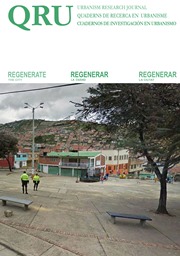Observar y documentar para planificar, proyectar y gestionar: la gestión de las transformaciones territoriales en América Latina
DOI:
https://doi.org/10.5821/qru.9624Abstract
The growing process of global urbanization and the concentration of population and resources in cities, demands an increasingly high level of knowledge, efficiency in the organization, and success in the project and management of the city by governments. Cities represent the strategic place of articulation of social structures, so that habitability tends to develop through sustainable guidelines, the basis of the collaborative research project presented. The figure of public managers, with innovative capacity and a high level of transversal training, based on multidisciplinary knowledge, must be taken into account to monitor new urban and territorial projects. It is in this line that the team of researchers constitutes a research space, based on learning by doing, based on the specific situations of the cities and deepens on a reflection, which establishes analogies, counterpositions, and transmission of project experience and city management between different contexts. A research approach is aimed at professional practice from a renewed vision of urban and disciplinary challenges. The lines of research described address key issues of the project and urban management. Likewise, participation in networks of international cities (and specifically Latin American) seeks to create a base for knowledge exchange and collaboration within the framework of globalization of a stable and lasting nature.Downloads
Issue
Section
License
Those authors who have publications with this journal, accept the following terms:
a. Authors will retain their copyright and guarantee the journal the right of first publication of their work, which will be simultaneously subject to the Creative Commons CC BY-NC-ND-4.0 recognition license that allows third parties to share the work provided that its author and its first publication are indicated in this journal, but they cannot be changed or used commercially.
b. Authors may adopt other non-exclusive license agreements for the distribution of the version of the published work (eg: deposit it in an institutional telematic archive or publish it in a monographic volume) provided that the initial publication in this journal is indicated.
c. Authors are allowed and recommended to disseminate their work through the Internet (e.g. in institutional telematic files or on their website) before and during the submission process, which can lead to interesting exchanges and increase citations. of the published work. (See The effect of open access).













